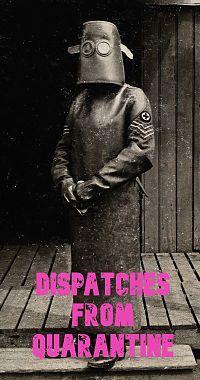 March is typically one of the busiest months in the life of a Philadelphia theatre critic. A few weeks ago, when I sat down to plan my coverage schedule, I counted at least 17 openings in the span of four weeks in Center City and the surrounding suburbs. Some of those productions made it to opening night. Others managed a performance or two before shuttering. All are now indefinitely postponed or permanently closed.
March is typically one of the busiest months in the life of a Philadelphia theatre critic. A few weeks ago, when I sat down to plan my coverage schedule, I counted at least 17 openings in the span of four weeks in Center City and the surrounding suburbs. Some of those productions made it to opening night. Others managed a performance or two before shuttering. All are now indefinitely postponed or permanently closed.
Had last week unfolded as expected, I would have reviewed three plays: A Streetcar Named Desire at the Arden Theatre Company; Gore Vidal’s The Best Man at the Walnut Street Theatre; and Othello at Lantern Theater Company. I don’t need to tell you that nothing has unfolded as expected, or will for the foreseeable future.
All three plays slated to open last week are classics; collectively, I’ve seen all of them onstage multiple times. But there is always the thrill of discovering something new, even when the work under consideration is familiar. The right actor’s portrayal of a legendary character can reveal fresh insight you’d never considered. An enterprising director can revise your entire understanding of a text. As a critic, it’s one of the most exciting parts of the job—the idea that every time you sit down in a darkened auditorium, notepad in hand, is a chance to learn.
With an increasingly heavy heart, I honestly cannot say when I will be able to return to the darkened auditoriums where I spend thousands of hours each year. But as I find myself spending increasing time in my bathrobe, my desire to learn from art and to write about it has not diminished. On three successive nights, I took to YouTube and watched complete filmed versions of the plays I would have seen live, hoping the spark of discovery would still be present. Happily, I found something to take away from each opportunity.
My mini-marathon began with a television adaptation of Streetcar that reunited Jessica Lange and Alec Baldwin, stars of the 1992 Broadway revival. Neither is ideal casting. Lange’s Blanche, febrile yet mannered, is a walking nervous breakdown long before her actual psychic collapse becomes unavoidable. Baldwin’s thickly appliquéd Cajun accent barely covers Brooklynese. Teleplay director Glenn Jordan makes some overly obvious choices—like having the Mexican woman sing “Flores para los muertos” just as Blanche arrives at Elysian Fields, foreshadowing her spiritual if not literal death—that rob Williams’s script of its airtight pacing.
The revelation here is Diane Lane’s near-ideal Stella, a forthright and powerful creature who knows which buttons to push with her sister and her husband. There are moments in the play that can feel offensive to a modern sensibility, as when Stella returns to Stanley after a physical altercation; these feel less problematic when you sense that she is the person in control. Lane has proved herself an able stage actor in recent seasons—her performance in the unfairly maligned Broadway revival of The Cherry Orchard was thoughtful and sympathetic. It might be time for her to take on the oft-misinterpreted Blanche.
The Best Man debuted in 1960 and often returns in election years. The last two Broadway revivals, in 2000 and 2012, happened amid contentious campaigns. I hoped to draw similar parallels in my review of Walnut Street’s production, but the theatre has announced that even when social-gathering prohibitions are lifted, it will not return.

So I watched the 1964 feature film with a sense of escapism, intoxicated by the surprising quaintness with which Vidal renders smoke-filled conventioneering. The performance that stayed with me was Ann Sothern as Sue-Ellen Gamage, a representative of women’s interests. Unlike Elizabeth Ashley or Angela Lansbury, who played the part in the recent revivals as a kind of fearsome grande dame, Sothern paints her as a housewife who’s used to having her intelligence questioned because of her sex and status. The chauvinism she encounters allows her to wheel and deal with casual abandon, scoring her points through underestimation. It’s a much more interesting take on the role—and it goes without saying that Sothern, whom Lucille Ball called “the best comedian in the business,” uses sly understatement to her humorous advantage.
For Othello, I turned to a production from Shakespeare’s Globe Theatre, filmed live in 2008. The staging, by Wilson Milam, is routine and traditionalist; the acting, by a largely second-tier cast, is crude and obvious. The play itself didn’t hold my attention. Instead I found myself watching the auditorium. The spectators in the Yard, pushed together on their feet, were clearly not practicing social distancing. Some even rested their arms on the edge of the stage. On every level of the O that circles the stage, viewers flung their bodies as far over the railings as they could, getting as close to the action as possible. It felt like another world, one whose return cannot come soon enough.
The exuberance that was missing from the performance itself overflowed when the company came out to dance the customary jig that closes period-practice Shakespeare performances. Suddenly the actors fully inhabited the space, the audience cheering them on. I hope that when we all leave our couches and come back to shared communal spaces like the theatre, that sense of beauty and fellowship will still be found.
Cameron Kelsall is a writer based in Philadelphia.

